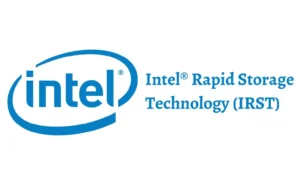Table of Contents
1. Introduction
In the ever-evolving landscape of technology, the transition from monolithic systems to modular, component-based architectures represents a paradigm shift in solution development. This article explores the theoretical foundations and tangible impacts of component technologies, providing an in-depth analysis of their transformative journey.

2. The Evolution of Component Technologies
2.1 The Birth of Component-Based Development
The advent of component-based development marked a crucial turning point in software architecture. Developers sought a more flexible and scalable approach to address the limitations of monolithic systems. Component-based development allowed for the creation of software by assembling independent, reusable components, significantly streamlining the development process.
2.2 Key Milestones in Component Technology
The evolution of component technologies has been punctuated by key milestones. The inception of object-oriented programming laid the groundwork, followed by the introduction of component models like Microsoft’s Component Object Model (COM) and JavaBeans. These milestones not only refined component-based development but also facilitated its widespread adoption across various industries.
3. Current Landscape: Components in Modern Solutions
3.1 Integration of Microservices
Microservices, as a contemporary manifestation of component-based architecture, involves breaking down applications into small, independent services. This section delves deeper into the advantages of microservices, emphasizing their role in enhancing agility, facilitating concurrent development, and enabling efficient testing and deployment.
The adoption of microservices has led to a fundamental shift in how developers approach software architecture. Rather than dealing with a monolithic codebase, teams can now focus on smaller, specialized services. This not only speeds up development but also allows for more efficient scaling and maintenance.
3.2 The Rise of APIs
The proliferation of Application Programming Interfaces (APIs) has become synonymous with the seamless integration of components. This subsection explores the significance of APIs as the glue that binds various services together. The rise of RESTful APIs, with their simplicity and flexibility, has become a standard, fostering interoperability and supporting the development of diverse, interconnected systems.
APIs play a pivotal role in modern software ecosystems, enabling different components to communicate and share data effectively. They act as the bridge between disparate services, providing a standardized interface for interaction. This not only facilitates smooth integration but also promotes a modular and scalable approach to software development.
3.3 Containerization and its Impact
Containerization technologies, exemplified by Docker and Kubernetes, have redefined how applications are deployed and managed. Containers encapsulate components and their dependencies, ensuring consistency across various environments. This section delves into the advantages of containerization, emphasizing its role in standardizing packaging, simplifying deployment, and accelerating development cycles.
Containers have become a cornerstone in the realm of component-based development. They offer a lightweight and consistent environment for running applications, making it easier to deploy and scale individual components. The portability of containers ensures that components work seamlessly across different environments, from development to production.

4. Applications Across Industries
4.1 Component Technologies in Healthcare
The healthcare industry has experienced a profound impact from component-based solutions. Electronic Health Records (EHR) systems, telemedicine platforms, and diagnostic tools are now leveraging modular components to revolutionize patient care, data management, and medical research.
The integration of component technologies in healthcare not only streamlines administrative processes but also facilitates the development of innovative solutions. For instance, modular EHR systems allow for easy customization to meet the specific needs of healthcare providers, leading to more efficient and personalized patient care.
4.2 Component Technologies in Finance
The finance sector has been quick to adopt component technologies to enhance security, streamline transactions, and introduce innovative financial products. Blockchain technology, built on modular components, ensures transparent and secure financial transactions. Additionally, modular banking applications provide a personalized and efficient user experience, adapting to the diverse needs of clients.
The modular approach in finance is evident in the development of modular banking applications. These applications allow financial institutions to customize their offerings, introducing new features and services without overhauling the entire system. This not only improves the user experience but also accelerates the pace of innovation in the financial sector.
4.3 Component Technologies in Manufacturing
In the manufacturing industry, the implementation of component-based systems has optimized production processes. From supply chain management to quality control, modular solutions enhance efficiency and flexibility. Smart factories leverage components for real-time monitoring, predictive maintenance, and adaptive manufacturing processes.
Component technologies in manufacturing bring a level of adaptability that was previously unattainable. The ability to assemble and reassemble components in the production line allows for swift changes in response to market demands. This modular approach is particularly beneficial in an era where customization and rapid adaptation are paramount.
5. Challenges and Solutions
5.1 Interoperability
While the modularity of component-based architectures brings flexibility, interoperability challenges can arise. This section delves into common issues and strategies for ensuring seamless integration.
Interoperability remains a key concern, especially in heterogeneous environments where different components may use diverse communication protocols. Standardization efforts, the use of well-defined APIs, and adherence to industry standards play pivotal roles in addressing interoperability challenges.
5.2 Security Concerns
Security is a paramount concern in component-based systems. This subsection explores the vulnerabilities introduced by the modularity of components and outlines best practices to safeguard against potential threats.
The modularity that brings flexibility also introduces potential security vulnerabilities. Encryption, regular security audits, and adherence to secure coding practices are crucial to fortify component-based solutions against cyber threats. Additionally, ensuring that each component follows the principle of least privilege enhances overall system security.
5.3 Scalability Issues
As solutions grow in complexity, scalability becomes crucial. This subsection delves into the challenges of scaling component-based systems and strategies for addressing them.
Scalability is a critical consideration in component-based systems, especially as they evolve and handle increased workloads. Technologies such as load balancing, auto-scaling, and microservices orchestration are essential in addressing scalability challenges, ensuring optimal performance even as the system expands.

6. Future Trends in Component Technologies
6.1 Edge Computing
The integration of component technologies with edge computing is an emerging trend. This section explores how edge computing is redefining the possibilities of decentralized architectures.
Edge computing brings computation closer to data sources, reducing latency and enhancing real-time processing. The marriage of component technologies with edge computing is particularly crucial for applications requiring low latency, such as Internet of Things (IoT) devices and autonomous systems.
6.2 Quantum Computing Integration
As quantum computing advances, its potential impact on component-based systems is substantial. This subsection delves into the nascent intersection of quantum computing and component technologies.
Quantum computing introduces new computational paradigms that can significantly outperform classical computing in specific tasks. The integration of quantum components into existing systems holds the promise of solving complex problems more efficiently, opening avenues for innovative applications in cryptography, optimization, and simulation.
6.3 AI and Machine Learning Integration
The synergy between component technologies and artificial intelligence (AI) is shaping the next generation of intelligent, adaptive systems. This section explores how modular AI and machine learning components are revolutionizing solution development.
The integration of AI and machine learning into component-based systems enables the creation of adaptable, intelligent systems capable of learning and evolving. Modular AI components facilitate the development of applications that can understand, reason, and respond to dynamic environments, unlocking new possibilities in automation, personalization, and decision-making.
7. The Role of Component Technologies in Innovation
Examine how component-based development acts as a catalyst for innovation by fostering a climate where ideas can be rapidly prototyped, tested, and deployed.
The modular nature of component-based development encourages experimentation and rapid prototyping. Developers can focus on individual components, allowing for faster iteration and testing. This approach accelerates the innovation cycle, enabling organizations to respond swiftly to changing market dynamics and technological advancements.

8. Conclusion: Empowering Tomorrow’s Solutions
In conclusion, the journey from theoretical foundations to practical applications underscores the pivotal role of component technologies in shaping the future. These modular approaches empower developers, drive innovation, and lay the groundwork for robust, scalable, and adaptive solutions that meet the demands of tomorrow’s technology landscape.
9. FAQs
Q1: How do component technologies enhance system flexibility?
Component technologies enhance system flexibility by allowing developers to build solutions from modular, reusable components. This modularity enables easier adaptation to changing requirements, facilitates rapid development, and supports the scalability of systems.
Q2: Are there any notable challenges in adopting component-based architectures?
Yes, challenges include interoperability issues, security concerns, and scalability challenges. Ensuring standardized communication protocols, implementing robust security measures, and adopting scalable architectural practices are crucial in addressing these challenges.
Q3: What industries benefit the most from component-based solutions?
Industries such as healthcare, finance, and manufacturing benefit significantly from component-based solutions. These industries leverage modular architectures to enhance efficiency, security, and innovation in their respective domains.
Q4: How are security concerns addressed in component-based systems?
Security concerns in component-based systems are addressed through encrypted communication, regular security audits, adherence to best coding practices, and continuous monitoring. These measures collectively strengthen the security posture of component-based solutions.
Q5: What future trends can we expect in component technologies?
Future trends in component technologies include integration with edge computing for reduced latency, exploration of quantum computing for enhanced computational capabilities, and increased synergy with AI and ML for creating intelligent and adaptive systems. These trends are poised to redefine the landscape of component-based development.
Read Previous Article: Intel Rapid Storage Technology



